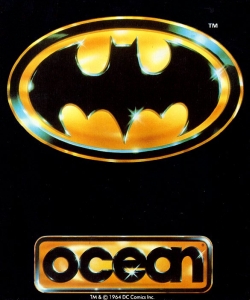| Batman | |
|---|---|
 | |
| Developer | Ocean Software |
| Publisher | Ocean Software |
| Programmers | Michael Lamb, John O'Brien, Allan Shortt (Amiga) Zach Townsend (C64) Paul Hughes, Michael Lamb (Atari ST) |
| Artists | Dawn Drake, Bill Harbison, John Palmer, Robert Hemphill (Amiga & Atari ST) Andrew Sleigh (C64) |
| Composers | Jonathan Dunn, Matthew Cannon (Amiga & Atari ST) Matthew Cannon (C64) |
| Platforms | Amiga, Amstrad CPC, Atari ST, Commodore 64, MS-DOS, MSX, ZX Spectrum |
| Release | 11 September 1989 |
| Genre | Action |
| Mode | Single-player |
Batman (also known as Batman: The Movie) [1] is an action video game developed and published by Ocean Software based on the 1989 film of the same name. It was released on 11 September 1989 [2] for the Commodore 64 and ZX Spectrum with Amiga, Amstrad CPC, Atari ST, MS-DOS and MSX versions following soon after. [3]
